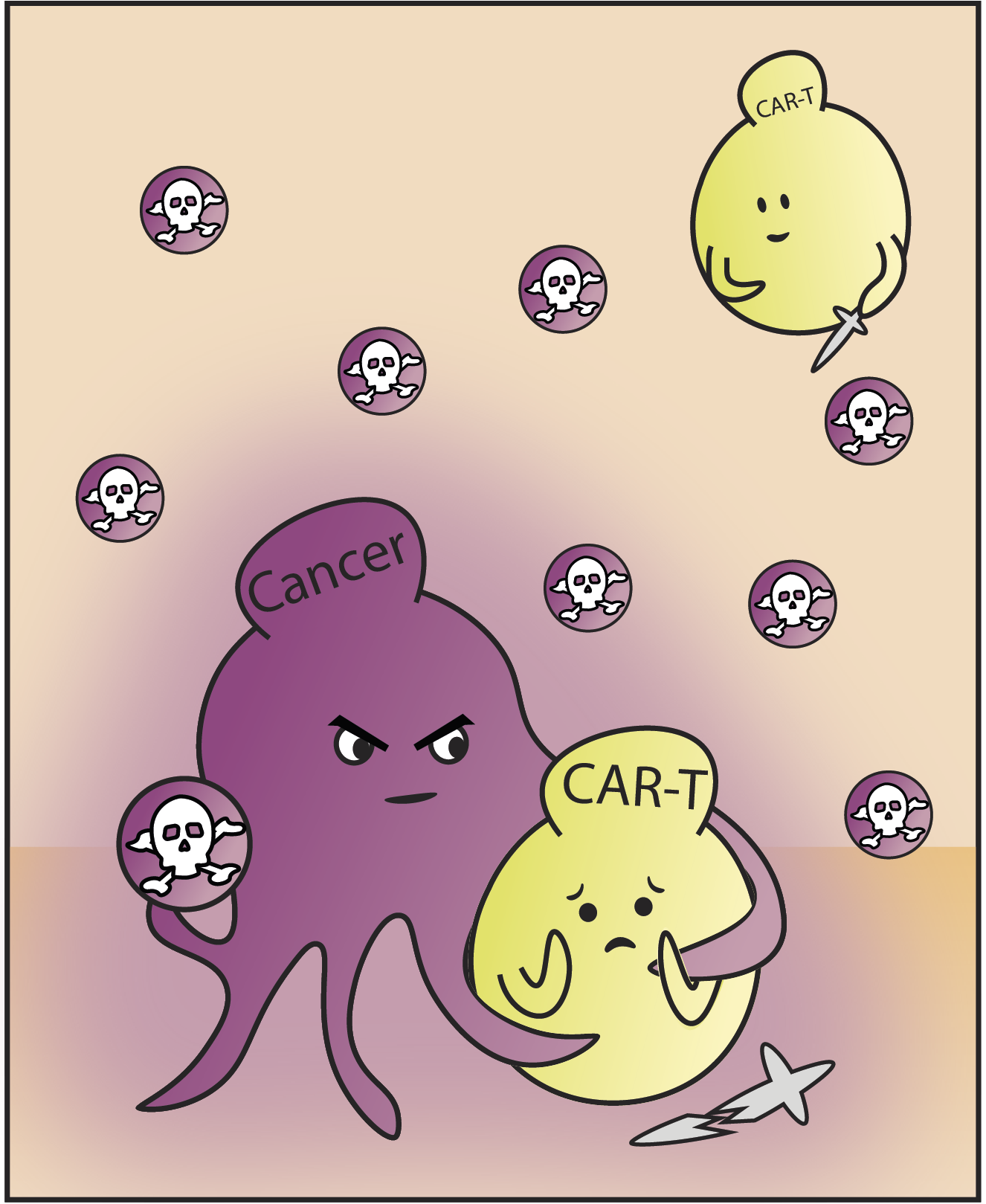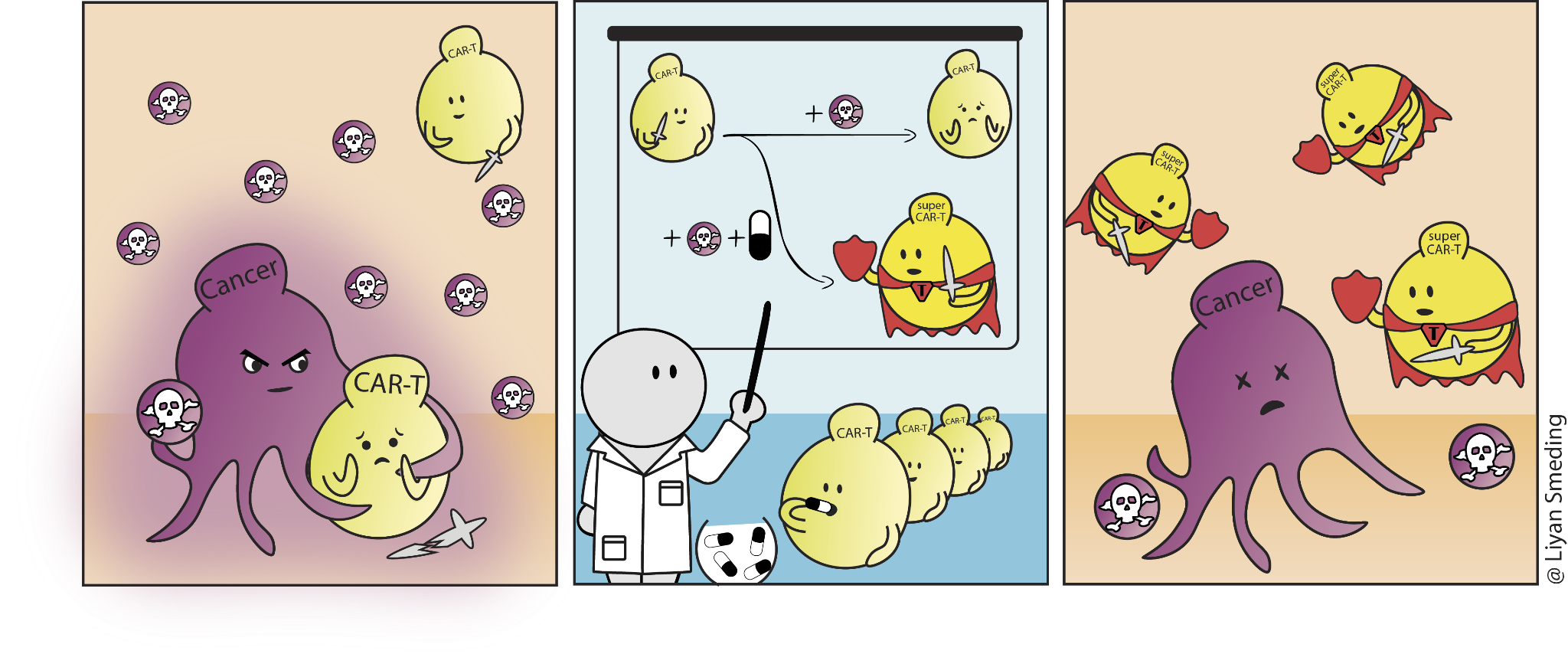
PhD thesis
I started my PhD project at EPFL in October 2020. After a week of online interviews I took the gamble and moved 800 km South to a completely new city. For the next 4 years I worked in the lab of Patrick Barth on designing and testing novel proteins to improve CAR T-cell cancer immunotherapy. I publicly defended my thesis in November 2024.

Download Thesis
Download my thesis abstract below, the full thesis document will be released here in the future.
Summary
Cancer treatment is ever-evolving. The new generations include immunotherapies that utilize the body’s own immune system to fight cancer. These types of therapies have had great clinical success and are often less harsh on the body than chemotherapy or radiotherapy. Among these immunotherapies is CAR T-cell therapy. First brought to the clinic in 2017, this therapy was a real breakthrough in cancer treatment.
Unfortunately, CAR T-cell therapy does not work for everyone. Especially in cases of solid cancers, the tumor is able to create a strong protective environment around itself, known as the tumor microenvironment (TME). The TME is complex and made up of many factors. Among these are adenosine and lysoPS, two molecules that hinder the proper functioning of CAR T-cells.
In my research projects, I worked on ways to rewire the effects that adenosine and lysoPS have on CAR T-cells. By creating protein chimeras, I aimed to interfere with the inhibitory signaling and even induce activating signaling pathways. To develop these proteins, we utilized state-of-the-art computational tools to predict and assess countless protein variants. After selection, I tested the top contenders in cellular assays in the lab.
We were able to identify promising candidates that will undergo further testing in cellular and preclinical settings.
Post a comment